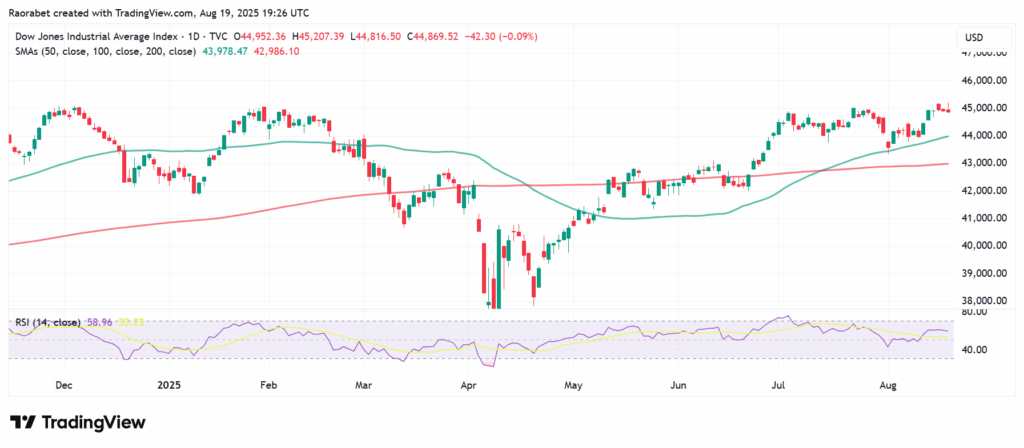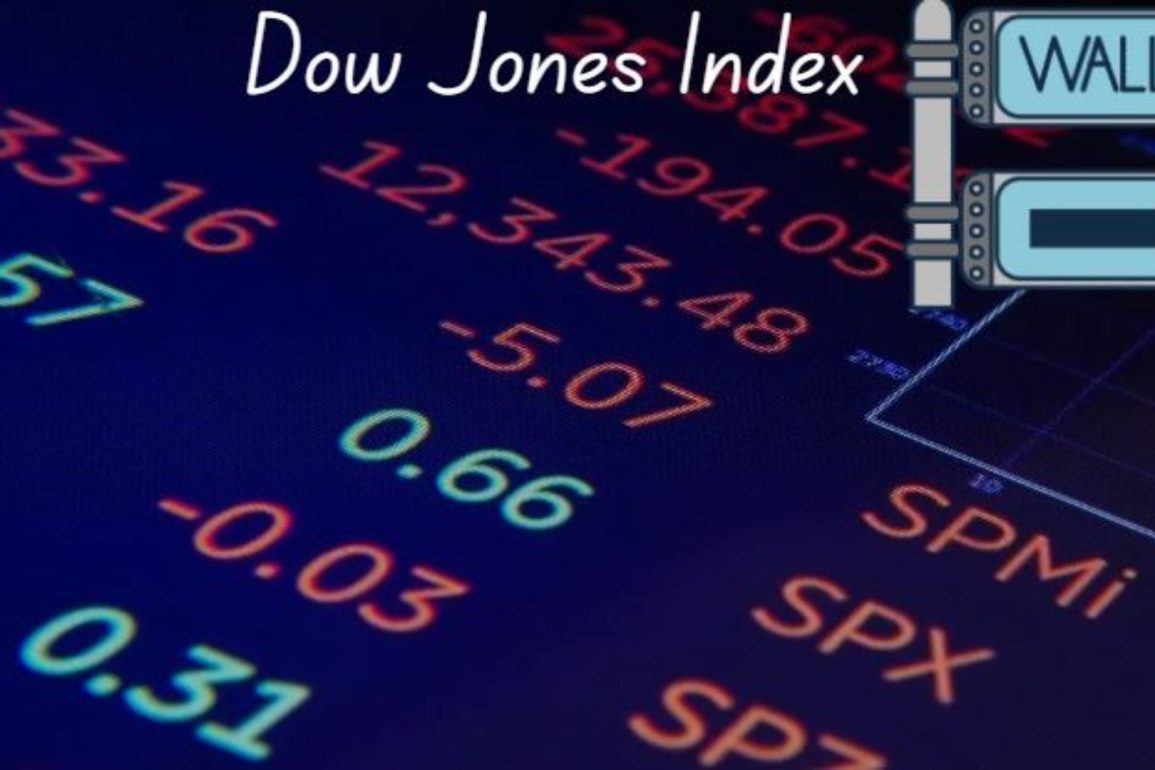- The next several weeks will be very important in deciding whether the blue-chip Dow Jones Index can reach new highs or drop.
As we go into late August 2025, the Dow Jones Index (INDEXDJX: DJI), which is a key indicator of the status of the US economy, is at an inflection point. The index had been going up steadily for a while, but now it is in a phase of consolidation. Investors must now weigh strong underlying fundamentals against a more cautious technical background.
The next several weeks will be very important in deciding whether the blue-chip index can reach new highs or if it needs to drop more significantly. This is especially true because important economic data will be coming out soon.
A Crossroads for Dow Jones: Mastering Fundamentals and Technicals
The index is currently at 44,918 points, which is a small increase of 0.02% from the previous day. This puts it close to its 52-week high of 45,207. The Dow Jones Index has gone up by 5.3% this year, thanks to strong corporate earnings and lower inflation pressures. However, it also faced significant volatility, primarily due to geopolitical concerns and uncertainty over US trade policy.
The Fundamentals Signal A Mixed Bag
A fragile balance of macroeconomic figures, corporate earnings, and Federal Reserve policy is shaping how people feel about the market right now. On one hand, the foundation seems to be rather stable. On the other hand, there are still headwinds, so investors need to be careful. Also, bond yields, like benchmark 10-year Treasury at about 3.8%, show that people expect growth to slow down.
Economic Health, Trade Policy and Geopolitics Shape the Dow
In the second quarter of 2025, US GDP grew at an annualized rate of 2.8%, driven primarily by consumer spending and strong corporate investments. However, this was slower than in previous quarters, as interest rates in the quarter were higher.
Meanwhile, inflation is still above the Federal Reserve’s 2% target, at about 2.9% according to the latest CPI reading. This will impact decisions on monetary policy. The Fed lowered rates twice in 2025 to stimulate growth and that will likely continue providing support for stocks in the medium-term. However, worries about future rate hikes or pauses because of ongoing wage pressures might limit gains.
Another pillar is corporate profits. Home Depot and other DJIA heavyweights had solid results in the fourth quarter of fiscal year 2025, with earnings per share (EPS) of $0.95 and revenue up 16% from the previous year. This shows that consumers are still spending money, even though the housing market is signaling struggle.
Cautious Optimism
Overall, investors are optimistic because of productivity gains and AI-driven efficiency. However, the Donald Trump administration is yet to settle on definitive trade policies, and things like shifting trade tariffs are an existential risk to the Dow Jones Index upside.
Bond markets and geopolitics also play a role. Widespread worries over US tariffs U.S., have made international stocks more popular, and that has changed certain capital flows.
Another potential problem is that some buyers increased their purchases early in 2025 to avoid tariffs, and that could mean less demand in the later part of the year. Nevertheless, with unemployment low at 4.1% and consumer confidence rising, the fundamentals are leaning toward support, creating a cautiously hopeful scenario.
The growth of US GDP has stayed small but positive, avoiding the big fears of a recession that were around last year. The job market is still strong, even though it seems to be cooling off from its prior red-hot state. Combined with the relatively low unemployment rate, this “soft landing” story has been a big reason why investors have faith in the market.
One of the most important thing is that inflation has come down from its highs. The Fed has been able to take a “wait-and-see” strategy and stop raising rates. Fed Chairman, Jerome Powell, has said that the central bank is happy to keep rates unchanged. This creates an atmosphere of stability that could make markets more predictable with inflation contained. On the other hand, if inflation suddenly goes up, the equation could change quickly, bringing back volatility.
Technicals Signal Neutral-to-Bullish Conditions
The 50-day SMA is currently a significant level of support. The Dow Jones index has tested this level a few times in the last few weeks and has gone up each time. If it breaks below this level, it could mean a change in short-term sentiment and a bigger decline could happen. The 200-day SMA (42,986) is the next significant support level. On the other hand, as long as the index stays above the 50-day SMA (43,978), we will likely see the Index either go sideways or up.
However, momentum indicators give different signals. The daily Relative Strength Index (RSI) is at 58.96, which is firmly neutral and not in the overbought (above 70) or oversold (below 30) areas.

This means that there is potential for movement without the risk of a rapid reversal. This means that there is buying pressure, but the market is not in that exuberant, and neither is it in an overextended state that typically comes before a sudden reversal. This means that the Dow Jones Index will likely still go up without getting overbought right away.
This article was originally published on InvestingCube.com. Republishing without permission is prohibited.


